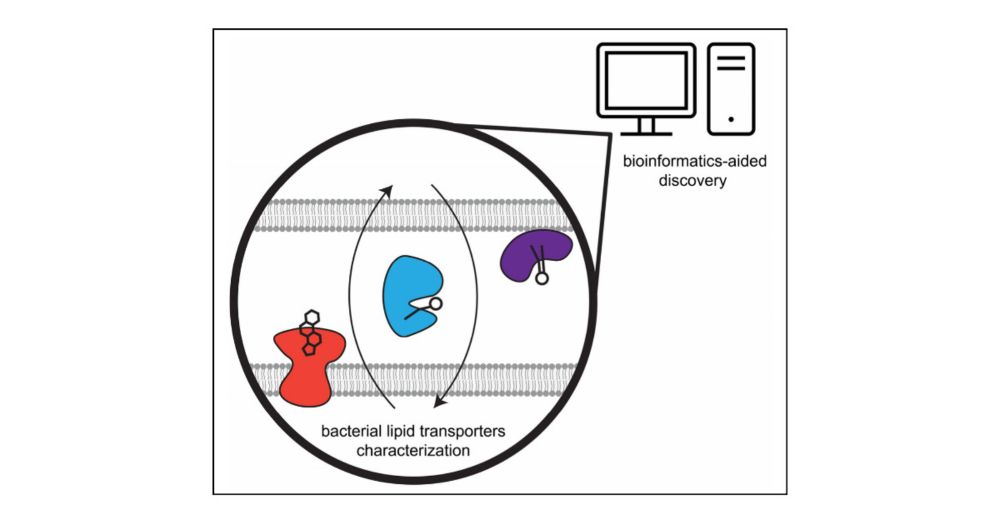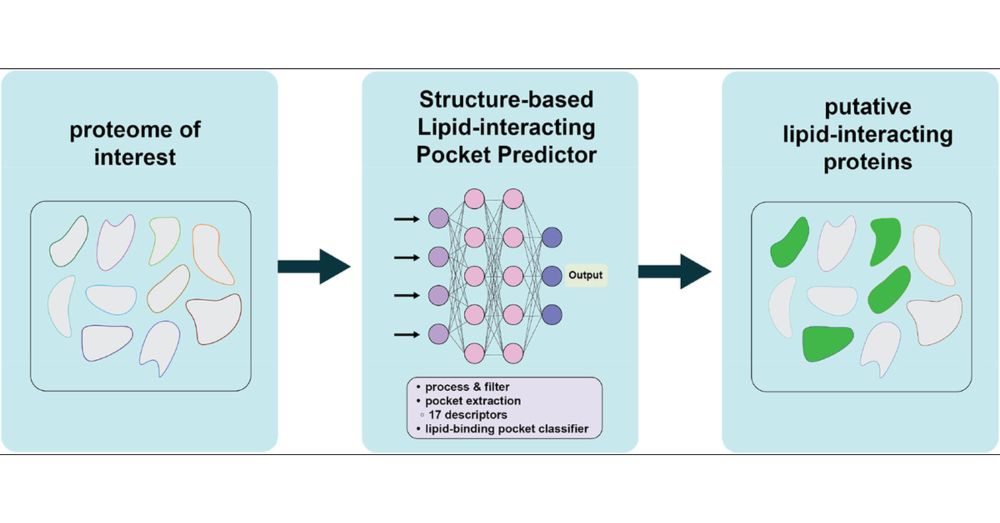Hello Bluesky! I’m Jonathan, a postdoc at UC Berkeley @ashleyrwolf.bsky.social‘s lab. Going to be at @asm.org ASMicrobe 2025. I’m interested in antimicrobial resistance, gut microbiome, and horizontal gene transfer. Let’s connect! #ASM #ASMicrobe #ASMicrobe2025
18.06.2025 03:49 — 👍 10 🔁 2 💬 1 📌 0

Truly wonderful to celebrate these amazing scientists graduating from the Dassama group! Congrats to @mekedlawitts.bsky.social @jonathanccc-chem.bsky.social on their PhDs and to Sebastian Alfonso on his Masters, all in Chemistry! @stanfordchemistry.bsky.social @stanford-chemh.bsky.social
15.06.2025 22:48 — 👍 15 🔁 3 💬 1 📌 0
In summary, I am incredibly proud to have witnessed and played a small part in @jonathanccc-chem.bsky.social's development into an independent scientist, and I am very excited to see him move on to exciting postdoctoral work at UC Berkeley. Congrats again, Jonathan! @stanford-chemh.bsky.social
18.12.2024 22:10 — 👍 3 🔁 2 💬 0 📌 0

Introducing Dr. @jonathanccc-chem.bsky.social, the first PhD from the Dassama Lab! I am very proud of the broad and deep undertakings that formed Jonathan's thesis! Some highlights are in the comments. Many congrats to the doc!!
18.12.2024 21:58 — 👍 31 🔁 5 💬 5 📌 0

Lipid Trafficking in Diverse Bacteria
ConspectusLipids are essential for life and serve as cell envelope components, signaling molecules, and nutrients. For lipids to achieve their required functions, they need to be correctly localized. This requires the action of transporter proteins and an energy source. The current understanding of bacterial lipid transporters is limited to a few classes. Given the diversity of lipid species and the predicted existence of specific lipid transporters, many more transporters await discovery and characterization. These proteins could be prime targets for modulators that control bacterial cell proliferation and pathogenesis.One overarching goal of our research is to understand the molecular mechanisms of bacterial metabolite trafficking, including lipids, and to leverage that understanding to identify or engineer inhibitory ligands. In recent years, our work has revealed two novel lipid transport systems in bacteria: bacterial sterol transporters (Bst) A, B, and C in Methylococcus capsulatus and the TatT proteins in Enhygromyxa salina and Treponema pallidum. Both systems are composed of transporters bioinformatically identified as being involved in the transport of other metabolites, but substrates were never revealed. However, the genetic colocalization of the genes encoding BstABC with sterol biosynthetic enzymes in M. capsulatus suggested that they might recognize sterols as substrates. Also, homologues of TatTs are present in diverse bacteria but are overrepresented in bacteria deficient in de novo lipid synthesis or residing in nutrient-poor environments; we reasoned that these proteins might facilitate the transport of lipids. Our efforts to reveal the substrate scope of two TatT proteins revealed their engagement with long-chain fatty acids.Enabling the discovery of the BstABC system and the TatT proteins were bioinformatic analyses, quantitative measurements of protein–ligand equilibrium affinities, and high-resolution structural studies that provided remarkable insights into ligand binding cavities and the structural basis for ligand interaction. These approaches, in particular our bioinformatics and structural work, highlighted the diversity of protein sequence and structures amenable to lipid engagement. These observations allowed the hypothesis that lipid handling proteins, in general and especially so in the bacterial domain, can have diverse amino acid compositions and three-dimensional structures. As such, bioinformatics geared at identifying them in poorly characterized genomes is likely to miss many candidates that diverge from well-characterized family members.This realization spurred efforts to understand the unifying features in all of the lipid handling proteins we have characterized to date. To do this, we inspected the ligand binding sites of the proteins: they were remarkably hydrophobic and sometimes displayed a dichotomy of hydrophobic and hydrophilic amino acids, akin to the ligands that they accommodate in those cavities. Because of this, we reasoned that the physicochemical features of ligand binding cavities could be accurate predictors of a protein’s propensity to bind lipids. This finding was leveraged to create structure-based lipid-interacting pocket predictor (SLiPP), a machine-learning algorithm capable of identifying ligand cavities with physico-chemical features consistent with those of known lipid binding sites. SLiPP is especially useful in poorly annotated genomes (such as with bacterial pathogens), where it could reveal candidate proteins to be targeted for the development of antimicrobials.
Exiting stealth mode to share this paper from @jonathanccc-chem.bsky.social that describes our recent discoveries of novel bacterial lipid handling proteins! I should add that this is a big week for Jonathan, with his thesis defense scheduled for tomorrow! pubs.acs.org/doi/10.1021/...
17.12.2024 16:53 — 👍 12 🔁 4 💬 0 📌 0
Ecology and evolution of microbial communities at the University of Manchester :) she/her
Emeritus Professor of Pathology and Laboratory Medicine and past Director of Laboratory Medicine at University of Pennsylvania-views are my own #ClinicalMicrobiology #LabMedicine #clinmicro #IDsky
Mexican Historian & Philosopher of Biology • Postdoctoral Fellow at @theramseylab.bsky.social (@clpskuleuven.bsky.social) • Book Reviews Editor for @jgps.bsky.social • #PhilSci #HistSci #philsky • Escribo y edito • https://www.alejandrofabregastejeda.com
Inupiaq, scientist of host-microbe interactions, mom, runner, news junkie, not necessarily in that order. I speak for myself. She/her. Only reskeets posts with alt text. Unapologetically typo prone.
UTA > UNTHSC (MSc) > Max Planck SHH (PhD) > Institut Pasteur Postdoc > SMU Assistant Prof and director of the Modern and Ancient Microbial Genomics labs.
Relaying microbiology news, articles and comments relevant to aspects on bacteria, fungi, viruses and other microbes / microorganisms. Microbes are 💪
Postdoc in Cress Lab @ Innovative Genomics Institute. I am interested in horizontal gene transfer and microbial community engineering to help the environment.
UofArizona #Aggie > UofMaryland PhD > NIH/NCI PostDoc > Biodefense, Pathogen #Genomics, #Bioinformatics, Data Authenticity, #BioSecurity. ++PC gaming, DnD, EDM, punk, goth, backcountry backpacking, porsche
🎲♟️👾🎮 🎸 🧪 🧬 🖥 🦠🚀🏎️
he/him. On Steam: @bioinformer
UC Irvine, UCI Microbiome, Orange County Phage Team, Fiber Evangelist https://kwhiteson.bio.uci.edu/
Cornell Microbiology PhD Student Schmidt Lab Lakes, Ponds, Microplastics🌊🧪 | UC Irvine ‘23 | she/hers
Professor of Microbiology & Immunology at UC Davis working on bacteria-host interactions. Opinions are my own.
Content creator for Elsevier, NPG, and others
Microbiome researcher
Based in Brisbane
Computational microbiologist
I like to post about: microbial genomics, microbial ecology, evolution, micro+plant biotechnology, climate, symbiosis, virology, ag, sci publishing and policy
Virus-obsessed bioinformatician, DOE JGI Scientist, Enjoy exploring the viral world with #metagenomics and other cool #omics toys. He/him. Opinions my own.
PhD student into bacteria & coffee. Rudner lab @harvardmed. @penn_state alum.
Amateur 🌿 Biologist • Aspiring 🌻 Designer
Independent Researcher at Binomica Labs
Degreeless Heathen • #diybio • #homelab
Open Lab Notebook: tinyurl.com/ATGCFFE
YouTube Channel: https://youtube.com/@atinygreencell
Lover of weird rxns, reactive intermediates, hockey (mostly 🐧and🐙)and equitable sci. Asst Prof at UNCW. Queer AF. Ligand appreciator. Bird and space nerd. ChemSky. He/him
We are a diverse group of chemists and biochemists studying the structure-function relationship of metalloproteins 🏳️🌈🧪🧬
Find us here: https://t.co/eHC3pQp4dz
A blog that aims to share appreciation for the width & depth of microbial activities.
Posts by Christoph, not necessarily the opinion of all team members of Small Things Considered (STC) https://schaechter.asmblog.org/schaechter/




